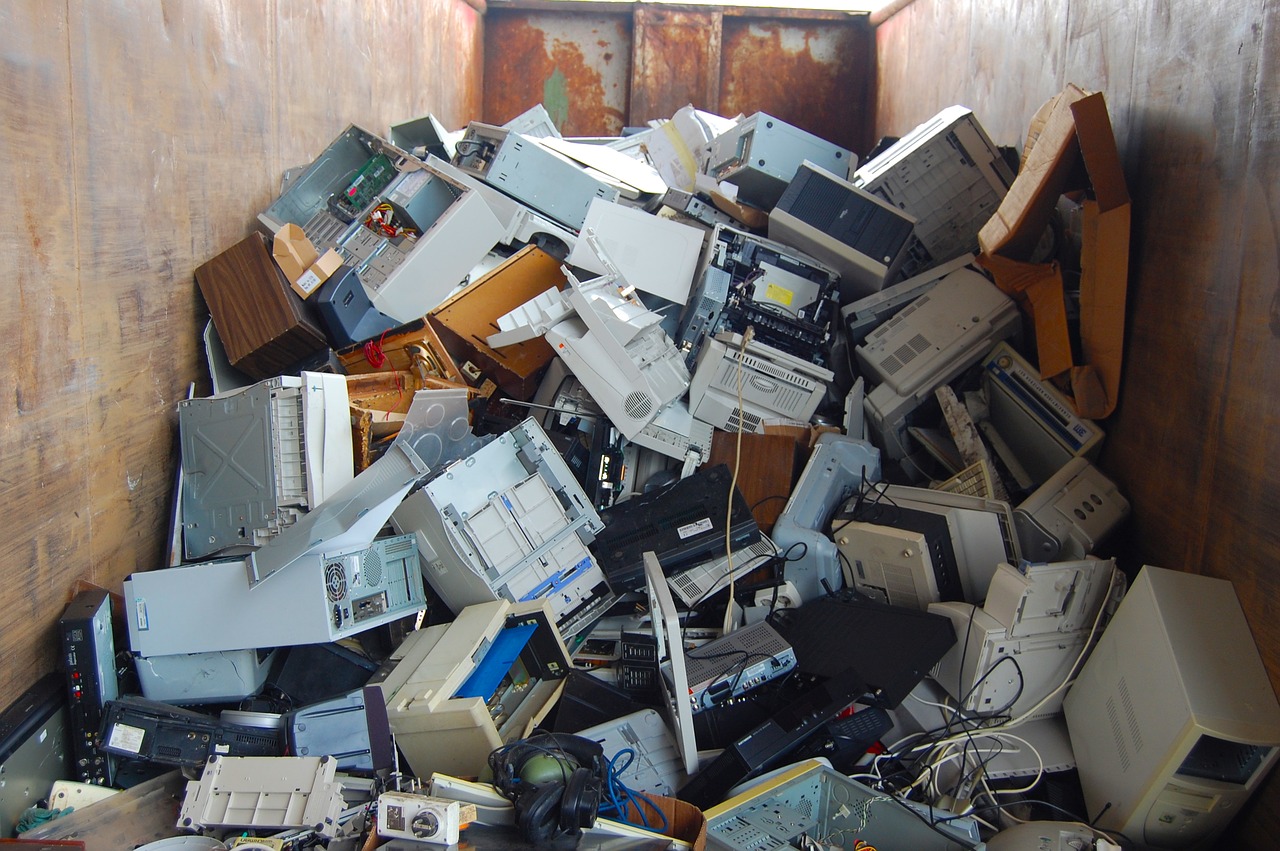Electronic waste is a huge problem. A problem that has been growing exponentially since the early 20th century when the first home radios hit the stores. Since then, we’ve been dumping everything from TVs to toasters, with little thought for the environment. Today, thanks to the ubiquity of smartphones, there’s a device in every pocket, and the amount of rubbish created is beginning to reach crisis levels. What’s more, it is predicted that the Internet of Things will usher in a whole new era of devices, creating even more waste as batteries exhaust themselves and devices wear out.
When compared with other types of waste, e-waste presents a variety of challenges. These are complex devices containing multiple materials, some of which are recyclable and others which aren’t. Additionally, concepts such as planned obsolescence compound the issue, ensuring there is a steady stream of waste created year on year. It is clear then, that responsibility for dealing with the disposal and recycling of e-waste lies, not only with consumers, but increasingly with manufacturers and businesses.
E-Waste and Your Business
Businesses of all sizes account for a relatively large proportion of the e-waste generated each year. Naturally, any company with a large IT department, or that relies heavily on the latest tech, is going to have a fairly rapid turnover of devices to support its operations. However, there are a number of ways to ensure that obsolete, and even broken devices stay out of landfill and serve some useful purpose after your business is finished with them.
Repair or Upgrade
The first step to reducing the amount of e-waste generated by your business is to ensure you maximize the lifespan of your existing equipment. Upgrading older PCs with new RAM, storage capacity, or even new software is one way you can extend the useful life of equipment. However, ensuring that damaged equipment is repaired is also a viable way to make the most of otherwise perfectly good devices. Smartphones or laptops with broken screens are a perfect example, and these devices should not be disposed of when a simple repair will suffice.
Sell
Just because your company no longer has a use for electronic devices doesn’t mean that others won’t. Larger companies, in particular, often buy higher spec equipment that lasts for many years, and these kinds of devices are usually in high demand with people who require less raw power. There is a huge market for second hand electronics, meaning you can recoup some of the outlay on new equipment and ensure old equipment is given a new home.
Donate
For equipment and devices that are a little less in demand on the second-hand market, then donation is an option – there is even the possibility that you will be able to claim tax deductions on donated equipment. Donations can either be organized directly through charities, or as part of a larger recycling program. Currently, there is a huge demand for older technologies in developing countries, particularly computers, older CRT monitors, and smartphones.
Recycle
There are certain types of e-waste that simply cannot be repaired, sold or donated. Lithium-ion batteries for instance, or printer cartridges and old media formats. Additionally, there are cases when other types of e-waste are destined for the trash–with no other options on the table. However, businesses must make every effort to ensure e-waste does not end up in landfill. For small amounts of waste, then the local dump will almost certainly offer some kind of recycling facility. However, for larger amounts of e-waste, or businesses that require regular collections, then a comprehensive waste management service is the way forward. Additionally, an e-waste management program tailored to your specific needs can help you identify ways to decrease your output over time, and ensure that all the waste you send for recycling is delivered to the correct facilities for proper processing.
